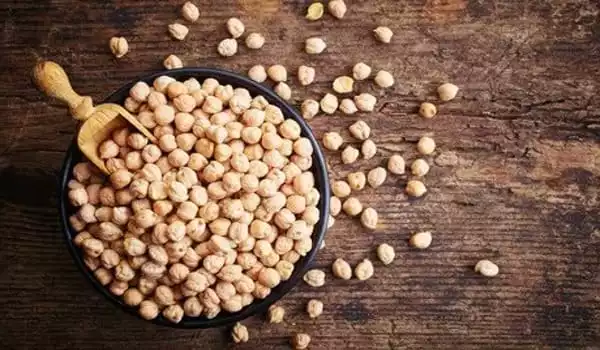A massive international research effort has resulted in the creation of a genetic model for the “ultimate” chickpea, which has the potential to increase crop yields by up to 12%. The research consortium genetically mapped thousands of chickpea varieties, which the UQ team then used to identify the most valuable gene combinations via artificial intelligence (AI).
Professor Ben Hayes, together with Professor Kai Voss-Fels and Associate Professor Lee Hickey, led the UQ component of the project to develop a ‘haplotype’ genomic prediction crop breeding strategy for improved seed weight performance.
“Because most crop species only have a few varieties sequenced, the international team’s analysis of more than 3000 cultivated and wild varieties was a massive undertaking,” Professor Hayes explained.
The study was a massive international undertaking, with teams from all over the world genetically mapping over 3000 varieties of chickpea. The data was then analyzed by a team from the University of Queensland in Australia to identify the best genes out of the bunch. Their criteria included increased yield and nutrition, as well as resistance to drought, heat, and disease.
We are using our AI ‘FastStack’ technology platform to design a chickpea with the ultimate genetics for maximum seed weight, and we believe this will eventually be a valuable tool for chickpea breeders.
Professor Hayes, project leader
Dr. Rajeev Varshney of the International Crops Research Institute for the Semi-Arid Tropics in Hyderabad, India, led the groundbreaking international study. The study established chickpea’s origins in the Fertile Crescent and provides a comprehensive picture of genetic variation within chickpea.
An AI algorithm was able to weight and rank genes using these as the basis for crop performance. “We are using our AI ‘FastStack’ technology platform to design a chickpea with the ultimate genetics for maximum seed weight, and we believe this will eventually be a valuable tool for chickpea breeders,” said Professor Hayes, project lead. The tool can then be used as a database and guide for farmers, who can then combine different strains to create the best breed.
“We identified 1,582 novel genes and established the chickpea pan-genome, which will serve as a foundation for breeding superior chickpea varieties with increased yield and resistance to drought, heat, and diseases,” Dr Varshney explained.

According to Professor Hayes, the data was used by the UQ team to model a chickpea with perfect genetics for seed weight, a trait linked to yield. “This additional data resulted in the yield increase predicted by our model, which is still being fine-tuned,” he explained. “We’re using our AI ‘FastStack’ technology platform to design a chickpea with the best genetics for maximum seed weight, and we believe this will be a valuable tool for chickpea breeders in the long run.”
FastStack combines artificial intelligence and genomic prediction technology to identify gene combinations that are most likely to improve crop performance. Chickpea is Australia’s second-largest pulse crop, after lupin, in terms of planting area and production. It is the world’s second-largest producer of pulses and ranks third in terms of area.
Associate Professor Lee Hickey, a UQ plant breeder and crop geneticist, stated that global demand for protein-rich pulses is increasing. “Improving chickpea productivity in Australia provides opportunities for our farmers to supply local food industries and export markets,” he explained.
“Using this AI-generated chickpea model for increased seed weight in the field will be difficult, given the number of generations required for optimal chickpea genetics, as well as the impact of different environments and management practices on crop growth. However, we have tools like speed breeding that can speed up this process and allow us to test and put these theoretical scenarios into practice.”
Dr. Hickey believes that new genomic breeding approaches, such as the haplotype model, will reshape chickpea breeding strategies for developing high-yielding and nutritious chickpea varieties. Chickpea is an important rotation crop in farming systems because it self-fertilizes for nitrogen, which reduces the need for nitrogen fertilizer.
Chickpeas are the world’s third largest pulse crop, and as more people switch to a lower-meat diet, demand for the crop will rise. They are also essential for crop rotation farming systems, as they naturally add nitrogen to the soil. This reduces the need for nitrogen fertilizer, which is a major polluter of land and waterways near farms.















